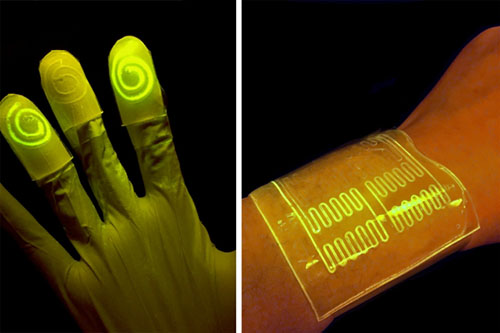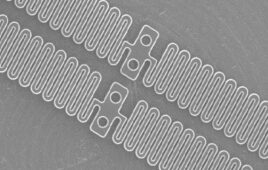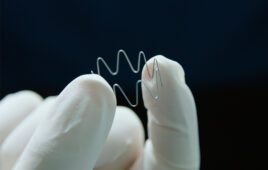
[Photo courtesy of the researchers]
1. Hydrogels make material that illuminates when exposed to chemicals
MIT engineers and biologists teamed up and designed a living-cell-injected hydrogel that can illuminate when exposed to certain chemicals.
The MIT team made wearable sensors using the hydrogel with living cells that lit up after touching a surface with certain chemicals. The new material has the potential to detect chemicals in the environment and the human body.
Using 3D printing, they made small channels in the first layer of the hydrogels. Then they merged the hydrogel to a layer of elastomer that could let in oxygen. They reprogrammed E. coli cells to detect the natural compound DAPG, injecting the E. coli into the channels. The hydrogel material was submerged in nutrients that infused through the hydrogels and kept the bacteria alive for several days. Each channel lit up when exposed to the chemical compounds.
Next >>
Gentle robots made of hydrogels that can grasp








